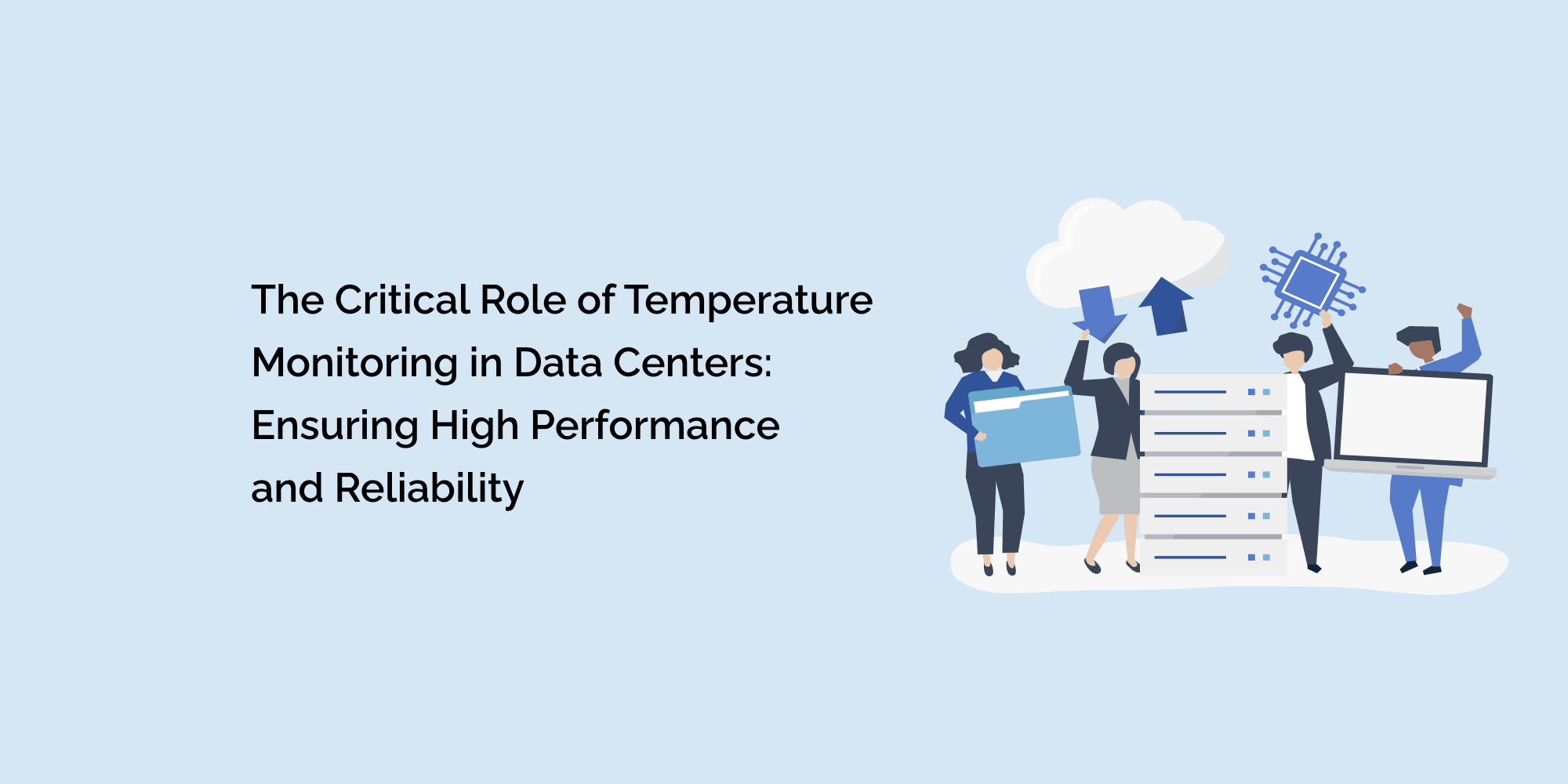Data centers serve as the backbone of the digital world, hosting and managing an immense amount of critical data for businesses, organizations, and individuals. The proper functioning of data centers is paramount for uninterrupted access to information and the smooth operation of online services. Temperature plays a crucial role among the many factors that influence data center performance and reliability. Temperature fluctuations can significantly impact server hardware, storage devices, and overall data center efficiency. In this blog, we will explore the critical role of temperature monitoring in data centers, the potential risks of temperature variations, and the best practices for maintaining optimal temperature conditions to ensure high performance and reliability.
The Impact of Temperature on Data Centers
Data centers house numerous servers, storage systems, networking equipment, and other critical infrastructure components. These devices generate substantial amounts of heat as they process and transfer data. Temperature changes can directly affect data center equipment and lead to various issues:
- Hardware Performance: High temperatures can cause server components, such as CPUs and memory modules, to overheat. Overheating can lead to reduced processing speeds, increased error rates, and even hardware failures, resulting in service disruptions and data loss.
- Energy Efficiency: Temperature fluctuations impact data center energy efficiency. High temperatures can increase cooling requirements, fueling energy consumption and operating costs.
- System Stability: Data center equipment operates optimally within specific temperature ranges. Excessively high or low temperatures can compromise system stability and availability.
- Equipment Lifespan: Consistent exposure to high temperatures can shorten the lifespan of hardware components, requiring more frequent replacements and increasing the total cost of ownership.
The Critical Role of Temperature Monitoring
Temperature monitoring is critical for data centers to ensure optimal performance, reliability, and cost-effectiveness. By tracking temperature conditions, data center administrators can:
- Identify Hot Spots: Temperature monitoring helps identify hot spots within the data center where cooling may be inadequate or unevenly distributed. Addressing hot spots promptly ensures uniform cooling and prevents equipment from overheating.
- Prevent Downtime: Proactive temperature monitoring allows administrators to detect potential temperature-related issues early on, preventing unexpected equipment failures and minimizing downtime.
- Optimize Cooling Efficiency: Data centers can use temperature data to fine-tune cooling systems, ensuring that cooling resources are efficiently distributed, and energy is conserved.
- Manage Environmental Conditions: Temperature monitoring helps data center operators manage environmental conditions more effectively, providing a conducive atmosphere for the reliable operation of sensitive equipment.
Best Practices for Temperature Monitoring in Data Centers
Effective temperature monitoring practices are vital for data center operators to maintain optimal performance and reliability. Here are some best practices:
- Install Distributed Sensors: Strategically place temperature sensors throughout the data center to monitor temperature variations in different areas. These sensors can be installed in server racks, air conditioning units, and critical equipment.
- Use Remote Monitoring Solutions: Leverage remote monitoring solutions to access temperature data from anywhere. Cloud-based monitoring platforms enable administrators to receive real-time alerts and access historical data for analysis.
- Set Threshold Alarms: Establish temperature thresholds based on equipment specifications and manufacturer recommendations. Set alarms to notify administrators when temperatures exceed or fall below acceptable limits.
- Regularly Inspect Cooling Systems: Conduct routine inspections and maintenance of cooling systems, including air conditioners, chillers, and ventilation systems. Regular maintenance ensures efficient cooling and prevents unexpected failures.
- Implement Redundant Cooling: Consider deploying redundant cooling systems to maintain data center stability even if one system fails. Redundancy ensures continuous cooling and minimizes the risk of temperature-related incidents.
- Monitor and Control Humidity: Maintaining appropriate humidity levels alongside temperature monitoring is essential to prevent static discharge and condensation issues that can damage sensitive equipment.
- Utilize Thermal Imaging: Thermal imaging cameras can help identify temperature abnormalities and hot spots without physical contact, enabling quick responses to potential cooling issues.
- Data Center Layout Optimization: Design the layout with temperature management in mind. Organize racks to ensure proper airflow and avoid obstructing cooling pathways.
- Conduct Regular Audits: Perform regular temperature audits to assess the cooling systems' effectiveness and identify improvement areas.
Certainly! Here are some frequently asked questions (FAQs) related to temperature monitoring in data centers:
Why is temperature monitoring necessary in data centers?
Temperature monitoring is crucial in data centers to ensure optimal performance, prevent equipment overheating, identify potential cooling issues, and maintain system reliability.
How does temperature impact data center performance?
Temperature fluctuations can lead to hardware performance issues, reduced system stability, increased energy consumption, and shortened equipment lifespan in data centers.
What are the risks of high temperatures in data centers?
High temperatures can cause server components to overheat, leading to reduced processing speeds, increased error rates, and hardware failures that may result in service disruptions and data loss.
Conclusion
Temperature monitoring is critical to data center management to ensure high performance, reliability, and energy efficiency. The impact of temperature fluctuations on server hardware, storage devices, and overall data center operations cannot be underestimated. By implementing best practices for temperature monitoring, data center operators can identify and address potential issues before they escalate, preventing costly downtime and data loss.
Proactive temperature monitoring empowers administrators to optimize cooling efficiency, manage environmental conditions, and make informed decisions to enhance data center performance. By prioritizing temperature monitoring and implementing effective cooling strategies, data centers can maintain their reputation as reliable and resilient digital information hubs, catering to the growing demands of the interconnected world.








